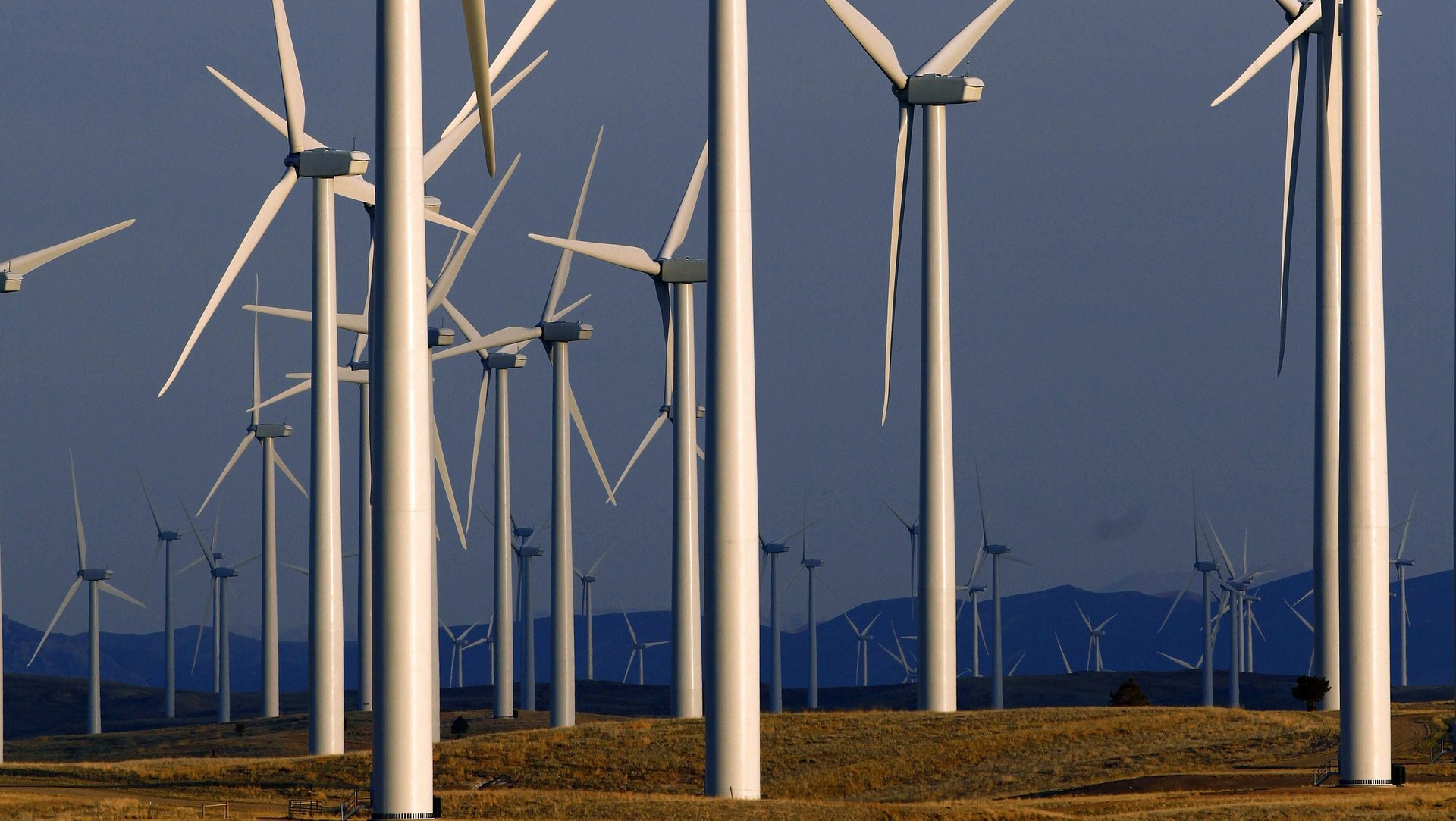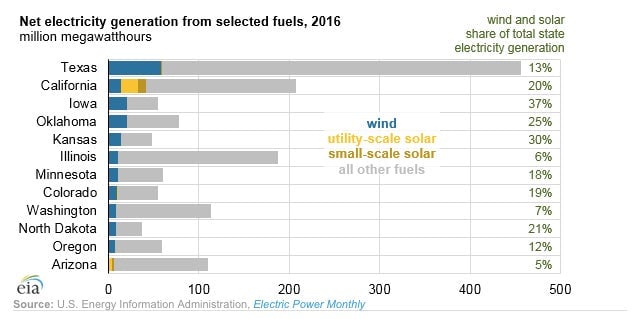For the first time ever, the US is now getting 10% of its electricity from wind and solar
Renewable energy in the US just hit a new benchmark: 10% of the electricity produced in a single month came from wind and solar power for the first time.


Renewable energy in the US just hit a new benchmark: 10% of the electricity produced in a single month came from wind and solar power for the first time.
This March, 8% of US electricity came from wind power, and 2% came from solar, totaling 10% of total energy generation nationally, according to the US Energy Information Administration. Data isn’t finalized for April yet, but the US Energy Information Administration says it expects April wind and solar numbers to exceed 10% of total generation again.
Renewables—especially wind power—already make up significantly more than 10% of the electricity in several states. In Texas, for example, 13% of total energy production comes from renewables. In California, 20% does.

Nationally, hitting the 10% monthly benchmark represents a significant increase over the same period last year. The US produced 65% more solar power and 17% more wind power in March 2017 than it did in March 2016, when those two sources accounted for 8.6% of all the electricity produced in the country.
The milestone is yet another piece of evidence for the argument that renewables can no longer be considered “alternative” energy, Christopher Clack, CEO of the power grid modeling firm Vibrant Clean Energy and a former National Oceanic and Atmospheric Administration researcher told Climate Central.